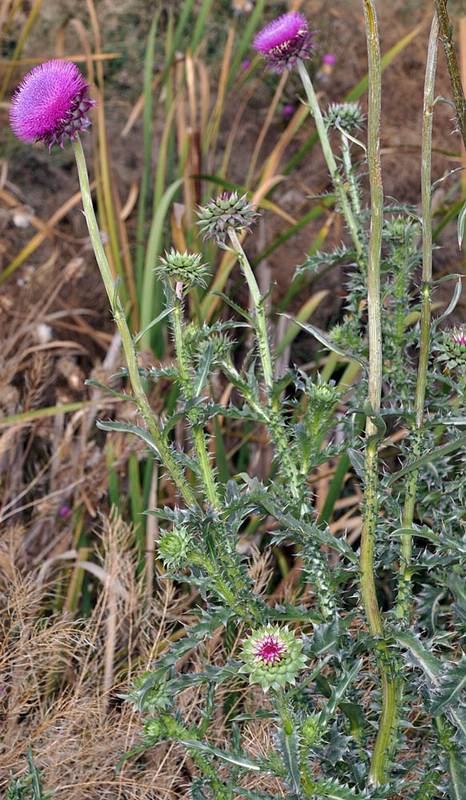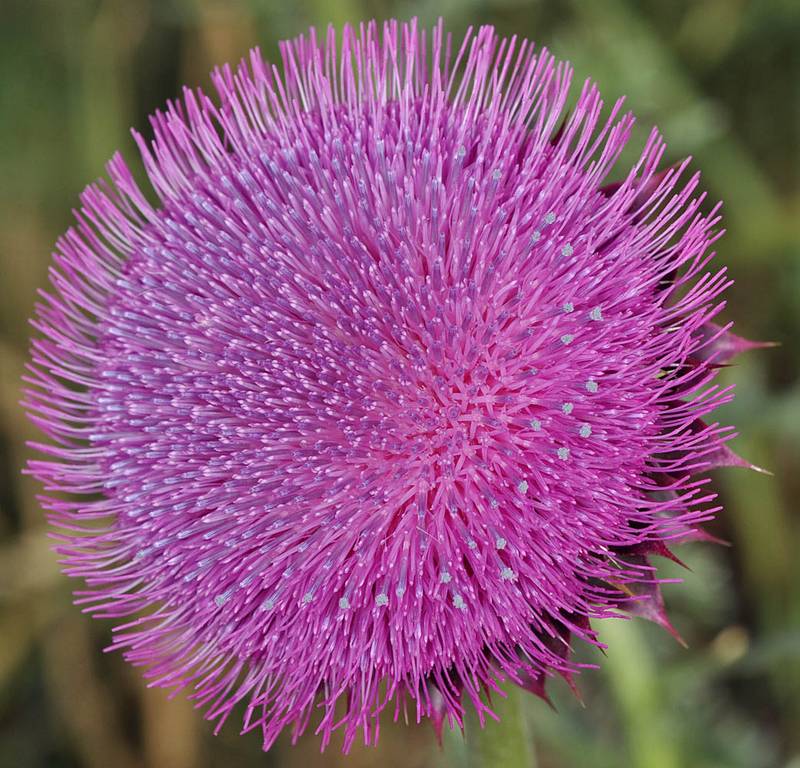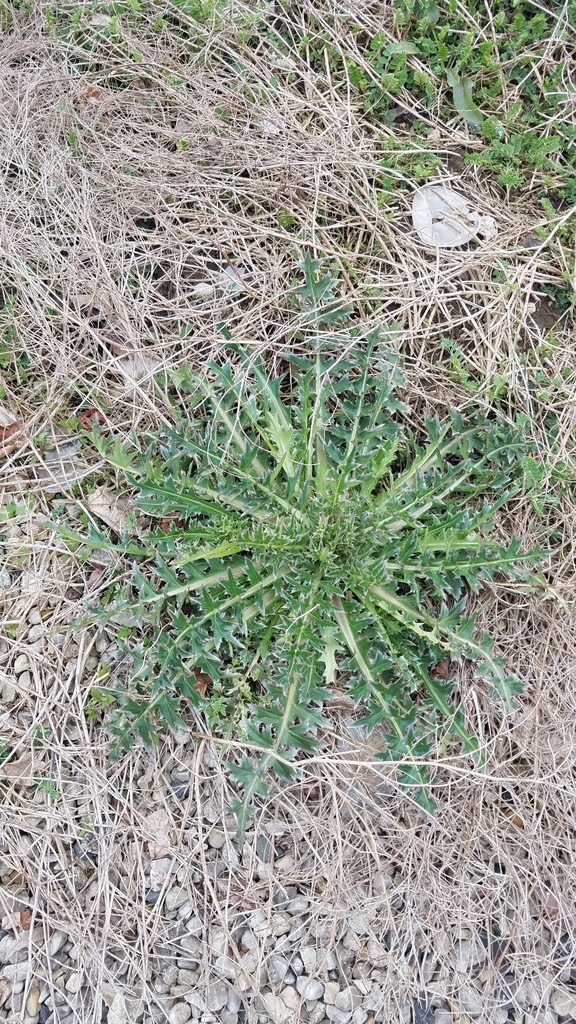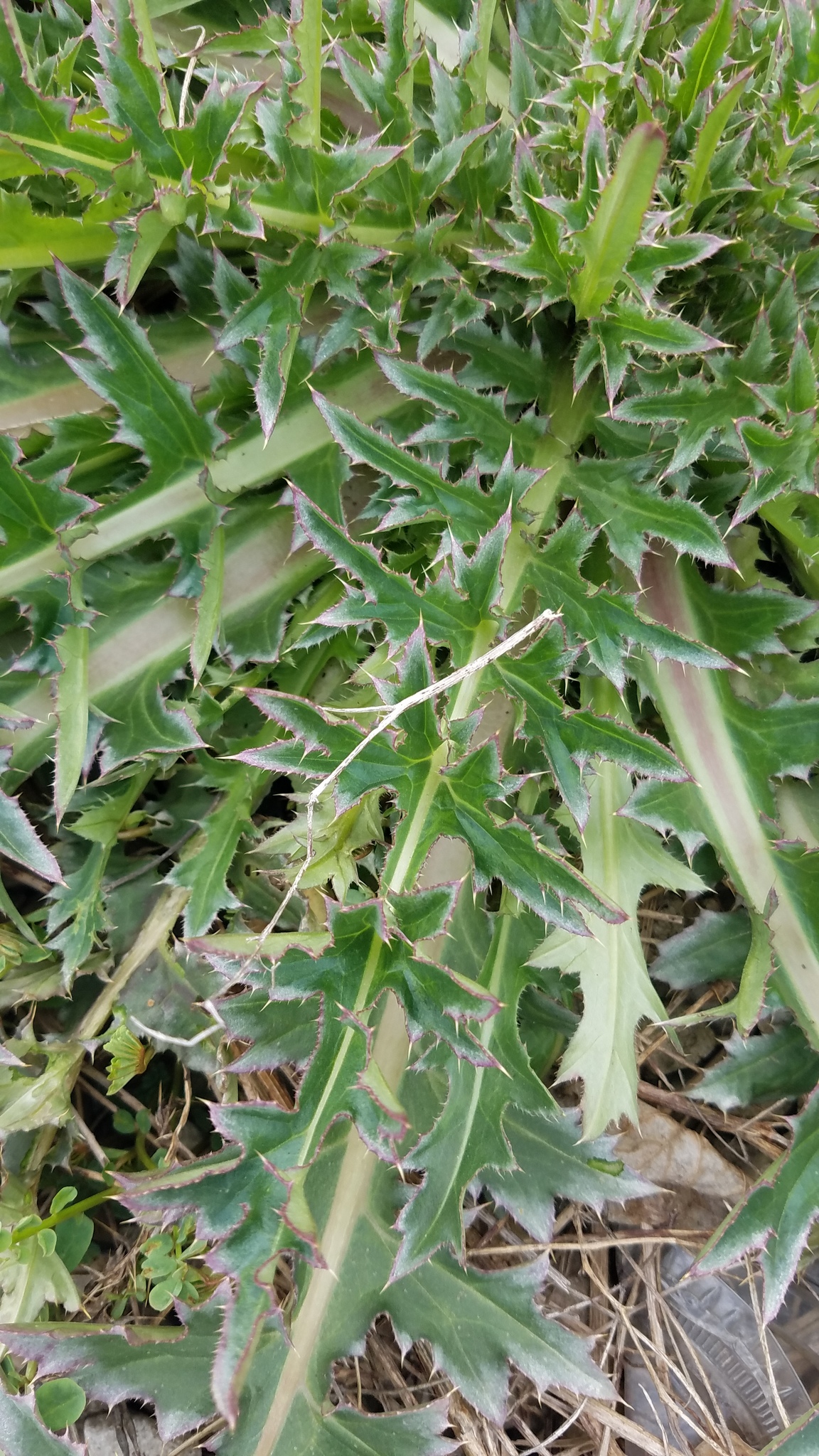Musk thistle identification and control
Information about the noxious weed musk thistle. Musk thistle is also known by its Latin name, Carduus nutans.
About this weed
Musk thistle is a regulated Class B noxious weed in King County. This means control is required in King County under the state noxious weed law. Musk thistle is also on the Washington quarantine list and it is illegal to buy, sell or offer it for sale in the state.
Musk thistle is known as Carduus nutans and it is in the aster family. It is also known as nodding thistle.

Why it's a problem
Musk thistle grows quickly in pastures, meadows, and fields. It limits growth opportunities for native and beneficial forage species. This reduces crop and rangeland production. It hinders stream bank access and is a nuisance in grain fields.
Plant description
Musk thistle is a biennial (two-year life cycle) originally from Europe and Asia. In warmer temperature is can grow as a winter annual (one year life cycle). It is found in neutral to acidic soils. It commonly grows in meadows, grasslands, pastures, and open disturbed soil such as roadsides and building sites. It can spready rapidly in areas that have frequent natural disturbance such as landslides or flooding.
Musk Thistle can grow up to 7 feet tall with large solitary flowerheads at the ends of stems. The flowers are reddish – purple and droop at maturity. Musk thistle flowers in June to October. Each plant may have 50 to 100 flowerheads with up to 1000 seeds per head. The seeds are wind dispersed for short distances and can remain viable in the soil for over ten years.
Stems are spiny and winged except just below the flowerhead with multiple branches. Leaves are dark green and alternate on stem. They have a smooth waxy surface and are deeply lobed, and spiney.




Be aware of look-alike plants
There are several other Carduus species listed as noxious weeds in King County. Slenderflower thistle (C. tenuiflorus) and shore thistle (C. pycnocephalus) are regulated class A. Alongside musk thistle, plumeless thistle (C. acanthoides) is also regulated class B.
It can also be confused with our native thistles, edible thistle (Cirsium edule) and clustered thistle (Cirsium brevistylum).
For more information or a site-specific control recommendation in King County, contact the noxious weed program. For information in other counties in Washington state, contact your local weed board or your local cooperative extension office.
What to do if you find it
Property owners are required to control musk thistle on lands that they manage. Please notify us if you see musk thistle growing in King County. Our program staff can provide the property owner or appropriate public agency with site-specific advice on how best to remove it. We map all known locations of regulated noxious weeds such as musk thistle in order to help us and others locate new infestations in time to control them.
Prevention is a much easier route than controlling an established infestation. To avoid spreading Musk thistle, cleaning is necessary. If you enter an area with Musk thistle, clean your boots, shoes, clothing, tools and vehicles after.
Control methods
An effective long-term strategy to prevent musk thistle infestation is to establish a dense, well-maintained pasture.
Manual control
Digging musk thistle out is effective. Try to do it before it flowers to minimize seed spread. Cultivation will kill young seedlings.
Chemical control
Multiple herbicides are effective against musk thistle. See the PNW Pest Management Handbook for the most up to date and specific method for chemical control of musk thistle. To reduce costs and environmental impacts, please use an Integrated Pest Management approach to weed control. Always read the label before using herbicide and follow state and local regulations to determine active ingredients, correct locations for use, signal words, and personal protective equipment you should wear to protect yourself when applying herbicide.
Avoid spraying where there is a chance that herbicide will enter a waterway or wetland unless you are using a state-approved aquatic herbicide and have the required permits and licenses to do so. Use of pesticides in water is regulated in Washington state. See Washington Department of Ecology Aquatic Pesticide Permits for details.
Disposal instructions
Bag and dispose of the flowers and seeds, the rest of the plant may be composted.
Washington State Noxious Weed Control Board pamphlet on noxious weed disposal

 Translate
Translate